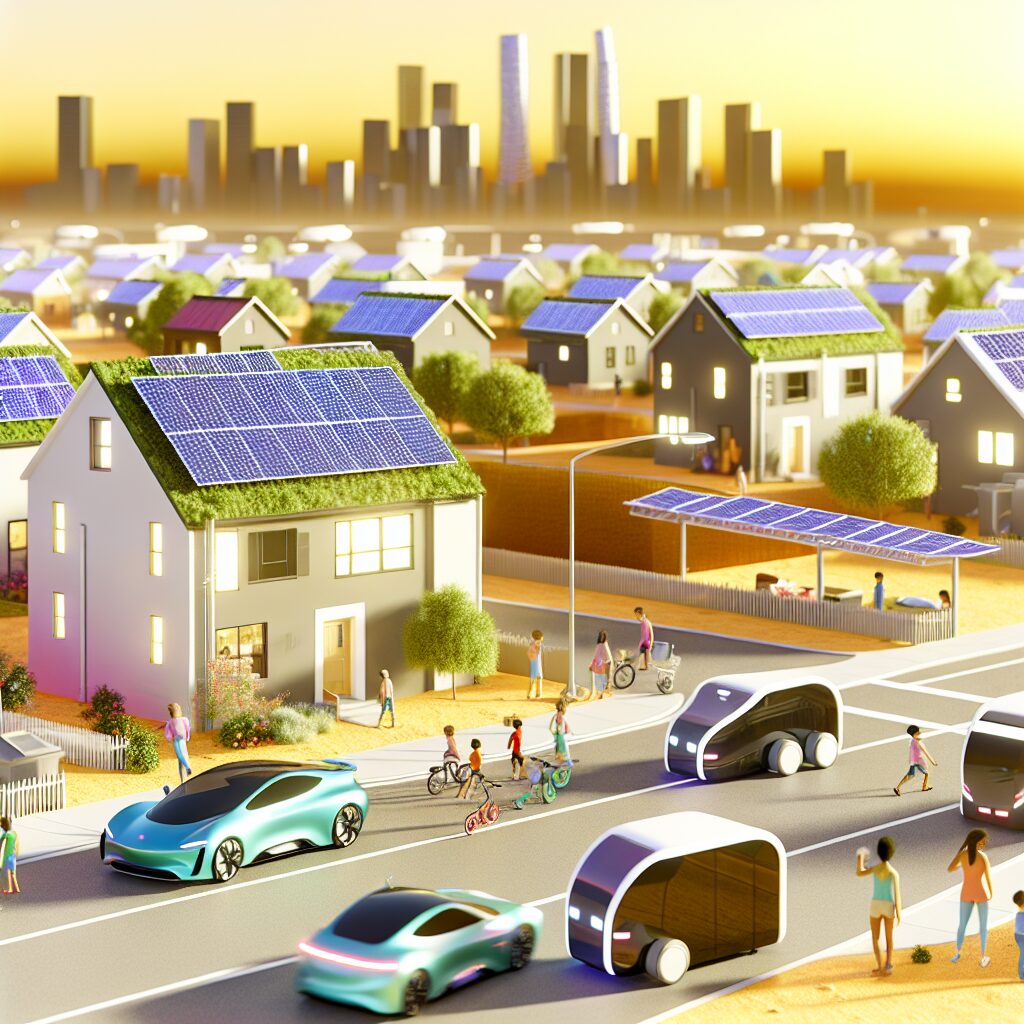The future of residential solar and storage in the United States is set to undergo significant transformations by 2050. According to the latest report, the integration of solar energy and storage solutions will play a pivotal role in reshaping the nation’s power demand landscape. This shift is not just a technological evolution but a societal one, promising a more sustainable and resilient energy future.
The Rise of Residential Solar Power
The adoption of residential solar power has been steadily increasing over the past decade. With advancements in solar panel efficiency and decreasing costs, more homeowners are turning to solar energy as a viable alternative to traditional power sources. The forecast highlights that by 2050, a substantial portion of US households will have adopted solar power, significantly reducing reliance on fossil fuels.
One of the key drivers behind this shift is the increasing awareness of climate change and the need for sustainable energy solutions. Homeowners are becoming more environmentally conscious and are seeking ways to reduce their carbon footprint. Solar power offers a clean, renewable energy source that aligns with these values.
Energy Storage: The Game Changer
While solar power alone offers numerous benefits, the integration of energy storage systems is where the real transformation lies. Energy storage solutions, such as home batteries, allow homeowners to store excess energy generated during the day for use during peak demand periods or when the sun isn’t shining. This not only enhances energy independence but also provides a reliable backup during power outages.
The forecast predicts that by 2050, energy storage systems will become a standard component of residential solar installations. This integration will enable households to optimize their energy usage, reduce electricity bills, and contribute to grid stability. Furthermore, advancements in battery technology are expected to continue, making storage solutions more efficient and affordable.
Impact on Power Demand
The widespread adoption of residential solar and storage systems is expected to have a profound impact on power demand patterns in the US. As more households generate and store their own energy, the demand for electricity from the grid during peak hours will decrease. This shift will alleviate stress on the grid, reducing the likelihood of blackouts and enhancing overall grid reliability.
Moreover, the decentralized nature of residential solar and storage systems will promote energy resilience. In the event of natural disasters or other disruptions, communities with widespread adoption of these technologies will be better equipped to maintain power and recover quickly.
Policy and Incentives
Government policies and incentives will play a crucial role in accelerating the adoption of residential solar and storage solutions. The forecast emphasizes the importance of continued support for renewable energy initiatives at both the federal and state levels. Tax credits, rebates, and other financial incentives can significantly reduce the upfront costs of solar and storage installations, making them more accessible to a broader range of homeowners.
Additionally, streamlined permitting processes and supportive regulations can remove barriers to adoption and encourage more households to invest in these technologies. Collaborative efforts between policymakers, industry stakeholders, and consumers will be essential to achieving the forecasted power demand shifts by 2050.
Challenges and Opportunities
While the forecast presents an optimistic view of the future, it also acknowledges the challenges that lie ahead. One of the primary challenges is ensuring equitable access to solar and storage technologies. Efforts must be made to ensure that all communities, including low-income and marginalized populations, have the opportunity to benefit from these advancements.
Furthermore, the integration of a large number of decentralized energy systems will require upgrades to the existing grid infrastructure. Investments in smart grid technologies and grid modernization will be necessary to accommodate the increased complexity and ensure seamless operation.
Despite these challenges, the forecast highlights numerous opportunities for innovation and growth. The solar and storage industry is poised for expansion, creating jobs and driving economic development. Research and development efforts will continue to push the boundaries of technology, resulting in even more efficient and cost-effective solutions.
Looking Ahead
The US residential solar and storage forecast for 2050 paints a promising picture of a cleaner, more resilient energy future. As homeowners increasingly adopt these technologies, power demand patterns will shift, leading to a more sustainable and reliable energy system. Government support, technological advancements, and collaborative efforts will be key to realizing this vision.
In conclusion, the transition to residential solar and storage is not just about energy; it’s about creating a better future for generations to come. By embracing these technologies, we can reduce our environmental impact, enhance energy security, and build a more sustainable world.
Source
https://www.enverus.com/newsroom/updated-us-residential-solar-and-storage-forecast-predicts-major-shifts-in-power-demand-by-2050/

